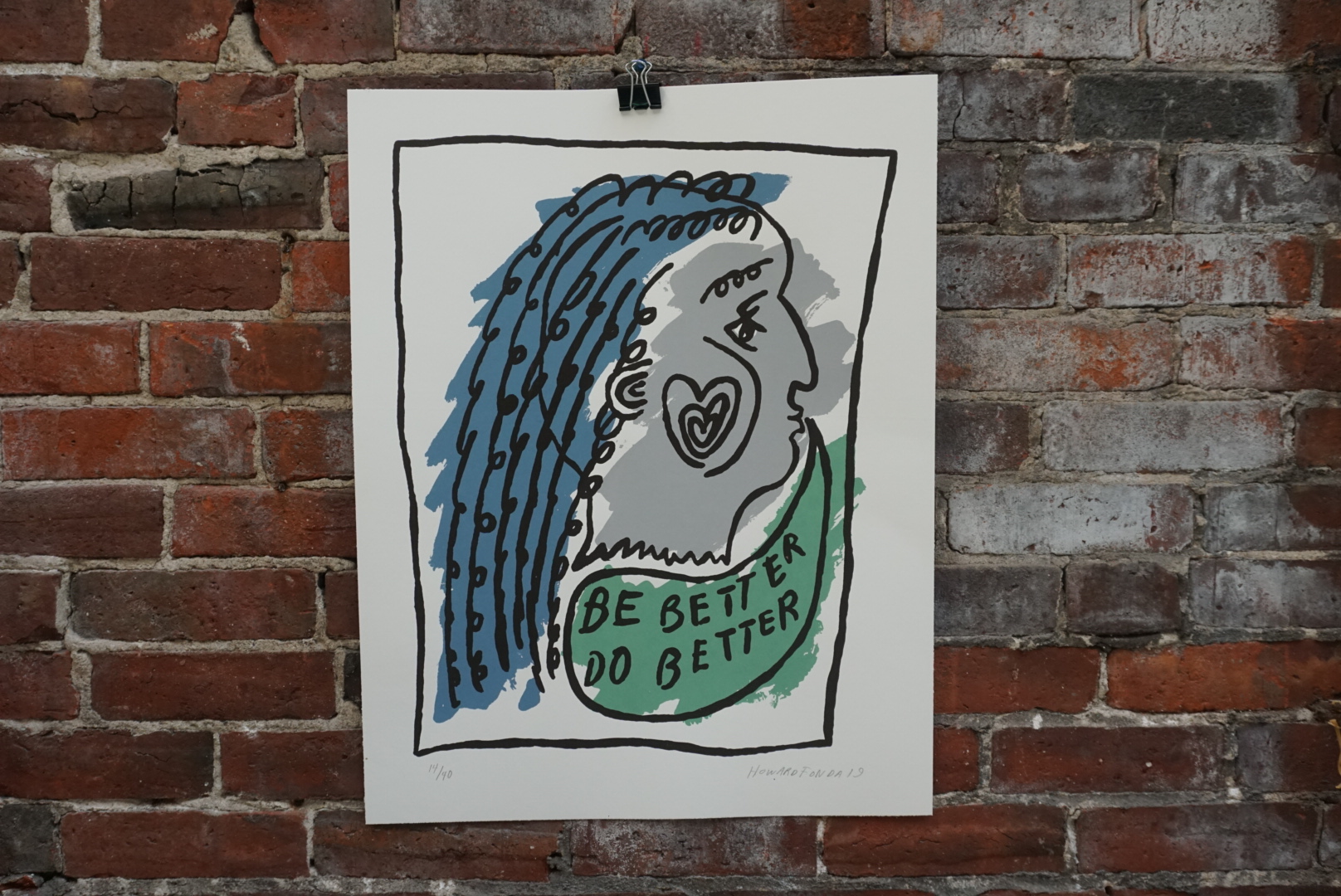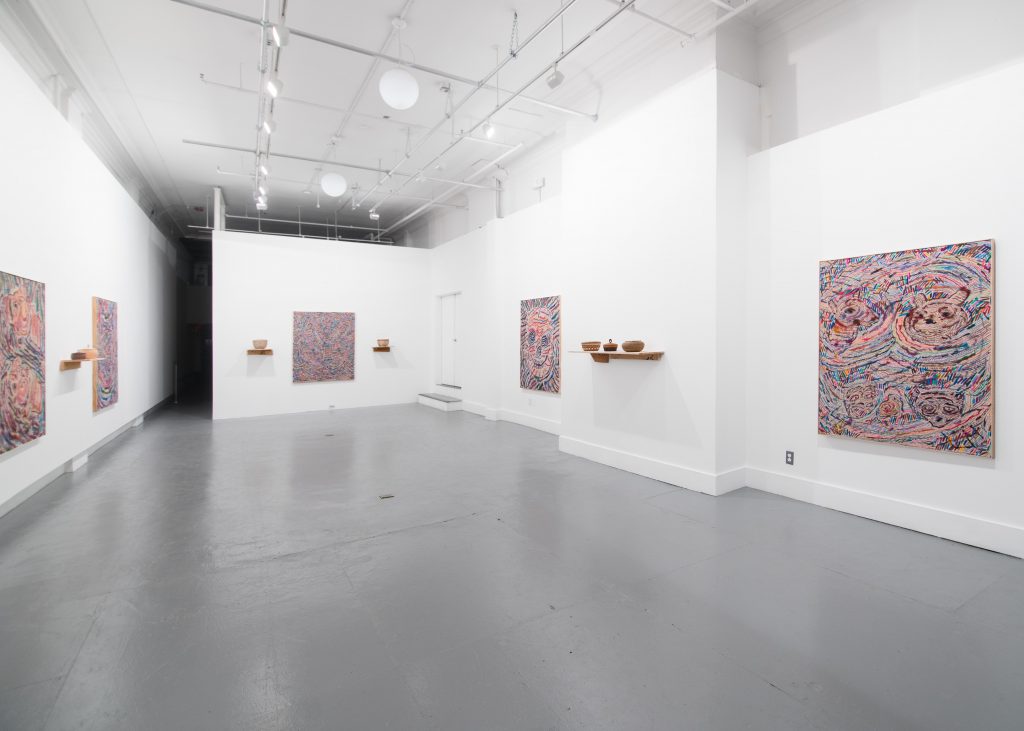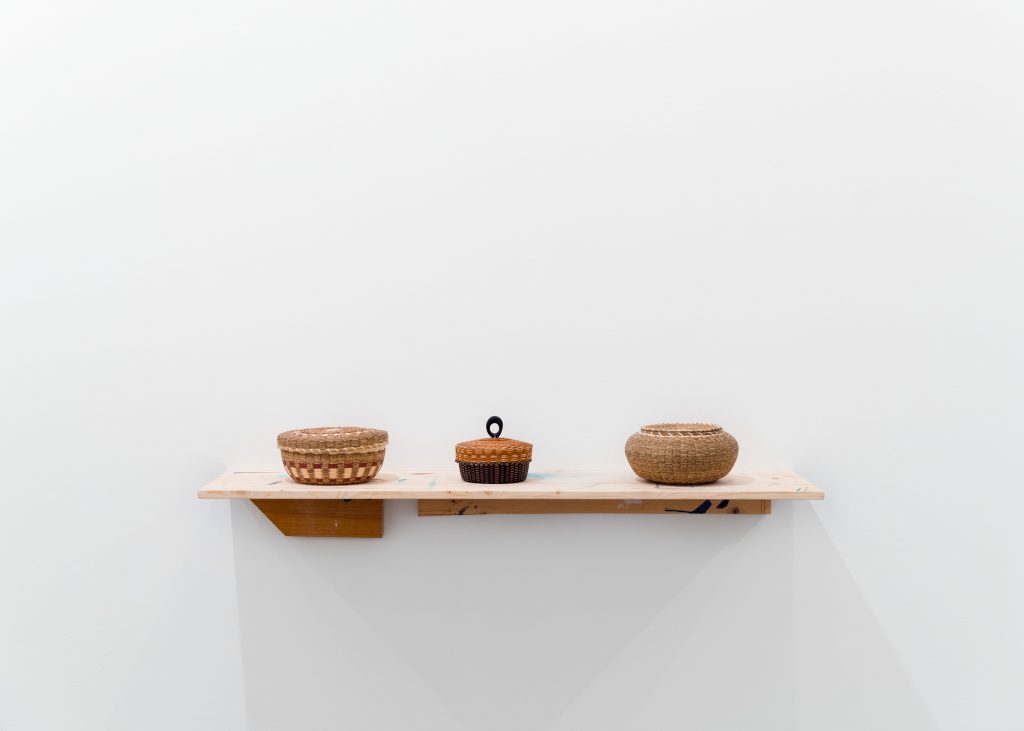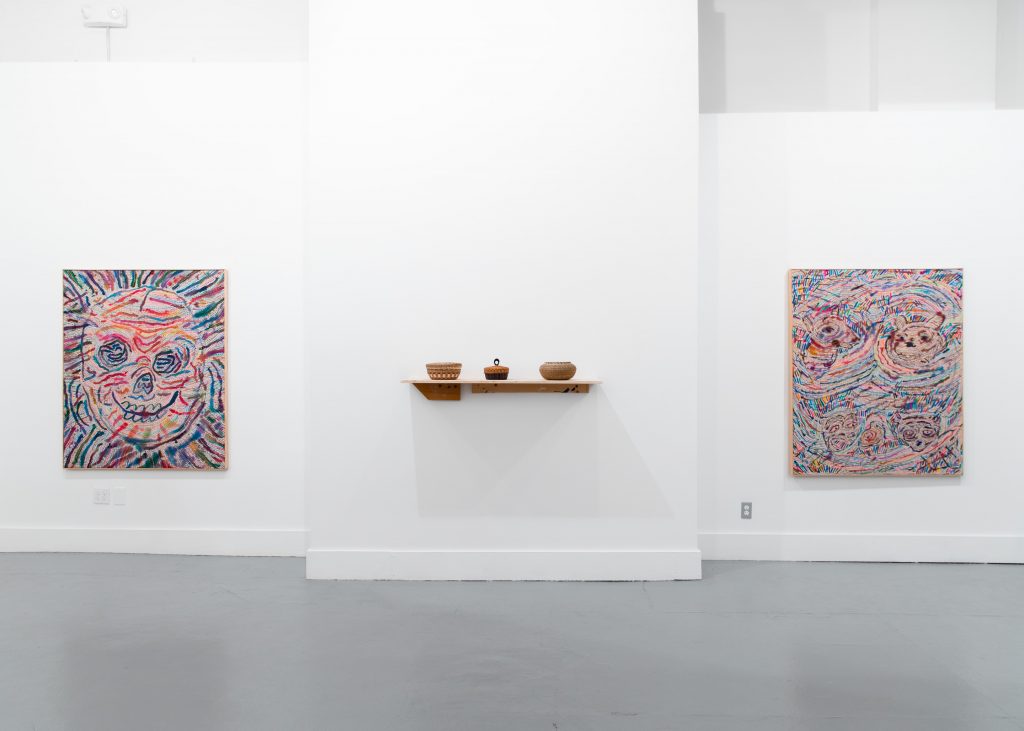Howard Fonda was the artist in residence at SPACE from July 24 through August 3rd. During his time here, he installed his show, Carry Me, in the gallery and worked on a limited edition print in collaboration with Pickwick Independent Press. I spoke with Howard on July 31st about his work, his residency at SPACE, and his special edition prints.
On this particular Wednesday, the sun floods in through the windows into Pickwick above Congress street. Howard Fonda is at work in the studio, printing a detailed limited edition print of one of his drawings. Howard usually sticks to drawing and painting, so printmaking is a new exploration for him apart from some DIY undertakings and a bit of work he did during undergrad.
He became interested in printmaking because of the accessibility of the medium. “I think it’s rad especially with the way social media is now, often people may hit me up like “hey I want to get one of your drawings.” And I always feel weird because small drawings are like 900 bucks and I understand that’s a lot of money. So it’s always hard to find a way; you want people to have your work but how do you do it in a way that doesn’t devalue the market that’s already established for your work?” said Fonda.
He also notices the similarities between his hometown, Portland, Oregon and Portland, Maine. “It’s really cool to be in a place where you have such a great sense of community and committed badass artists. Everyone is aware of the criticality that’s happening in epicenters like New York or LA — but I don’t feel the need to be there.”
You have a section on your website called “Failures but ideas and attempts.” Most artists don’t really share failures, especially on their website and portfolio. How do you determine if a work is a failure by your standards and then why do you think it’s valuable to share that publicly online?
It felt like a natural thing to do. With my work, just by the nature of the way I work and the process of which I work, failure happens all the time. And I would always keep images of stuff that didn’t work out. I’ve even shown works and then, years later realized it is trash. So it felt natural to show that part of the process. Failure is a part of making art. How can you not fail or have a bad idea?
You say that you are primarily interested in finding meaning. How do you differentiate between finding and creating meaning?
I guess I feel like that might be a bit of a reactionary statement but I think there’s just some level of hubris in the idea that you just create something out of nothing and that it puts you in a God scenario or something. I’m more interested in having conversations about the artwork. It’s fun to hear anecdotes about artists or listen to them talk to get an idea of their process. But at the end of the day, I shouldn’t like your work because I like you, I should like your work because you make great work. Maybe it gives the artist too much credit?
Is that part of the reason why you cite your influences on your website?
Yeah, I think that’s important too because I would like to think that if you’re interested in my work that you’ll get to some of those things. The older I get the less I want to talk. So it was kind of like a starting point, a conversation starter instead of me having to unpack everything for an audience.
The book “Chromophobia” by David Batchelor is listed on your ‘Why’ page. The unknowing eye may look at your work and think that the color is designated as playful or childish but is there something more serious in your use of color?
I really nerd out about color. As a painter, in particular, I like going in and trying to decode other people’s paintings and find out what they used. And just by the nature of my process, I got really interested in color and how the same color within different brands and manufacturing do different things. But I also was kind of adverse to the dry, graphic way color is often introduced with color studies. I was always more interested in talking about color and relational terms. So the Chromophobia book was good. I found it really great because it stepped away from that kind of rigid Pantone world and gave color a narrative and some historical narrative that I thought was way more interesting.
Many of the sources on your “why” page are books or albums that rely on language. How do these text-based sources translate to visual expression for you?
I had a really difficult time with [reading and writing] in my youth. It wasn’t until college that I figured out a way to make reading work for me. And since then, when I read a book, I want to hang on to that book forever. So there’s some kind of sentimental value to language. I also feel like I’m just constantly writing something down, like a song lyric I hear or something from a lecture or a snippet I heard on the bus. Those things sometimes get attached to images and are parallel to a narrative in the painting, but maybe sometimes it is a total stream of conscious and just pops up in the moment. And I try to be really present when I’m making so I trust that. It’s just trying to make sense of the world. It seems like a really trite thing to say but it’s true. I mean it really is just a way to come to understand existence.
Howard’s show, ‘Carry Me’ opened on August 2nd. Limited edition prints will be available for sale on a first come first served basis at SPACE or online.
Follow Howard on Instagram @fondahoward or read more about him in Artmaze Magazine and Artforum.




